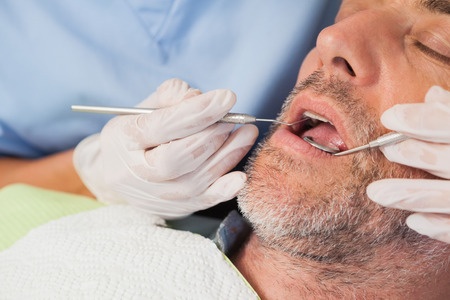
Sedation Dentistry refers to the use of sedation during dental treatment. Sedation is most commonly used during extensive procedures, for patients with dental phobia, or for patients who find it difficult to sit still. There are different types of sedation including nitrous oxide (‘laughing gas’), IV sedation, oral sedatives, and general anesthetic.
Sedation can range from the use of nitrous oxide to calm a patient, to general anesthetics used to put patients to sleep. Patients with dental phobia, low pain tolerance, major dental treatment, physical handicaps, or strong gag reflexes, may require sedation. Sedation is an effective way to help patients feel comfortable during their dental visit. Before using a sedative or anesthetic, it is important to tell your endodontist about any medications or medical treatments you are receiving. Some medications interact with sedation causing severe reactions. Before administering any sedative or anesthetic, your dentist will talk to you about the process of sedation and pre-and post-sedation instructions.
“Laughing Gas”
Nitrous oxide, more commonly known as laughing gas, is often used as a conscious sedative during a dental visit. The gas is administered with a mixture of oxygen and has a calming effect that helps phobic or anxious patients relax during their dental treatment. Because it is a mild sedative, patients are still conscious and can talk to their dentist during their visit. After treatment, the nitrous is turned off and oxygen is administered for five to 10 minutes to help flush any remaining gas. The effects wear off almost immediately. Nitrous oxide rarely has side effects although some patients may experience minor nausea and constipation. Your doctor will provide you with pre-and post-sedation instructions.
Oral Sedation
For patients needing more than nitrous oxide to help them relax during a dental visit, we offer oral sedation. Oral sedation, a method of conscious sedation, safely produces a deep state of relaxation; making it possible for you to have a dental procedure without feeling any discomfort. Our doctors have years of experience and use the most current sedation techniques and patient care methods.
Prior to your scheduled procedure, please inform your doctor of any medications you are currently taking as well as any medical problems you have, so he/she can prescribe the proper sedative for you to take before the appointment. Please make arrangements to have someone bring you to the office and take you home. When you arrive, your doctor will begin monitoring your vital signs and evaluate your level of sedation. You may need more medication, but often, this is not necessary. During the procedure, you will still be awake, but will feel totally comfortable and relaxed.
